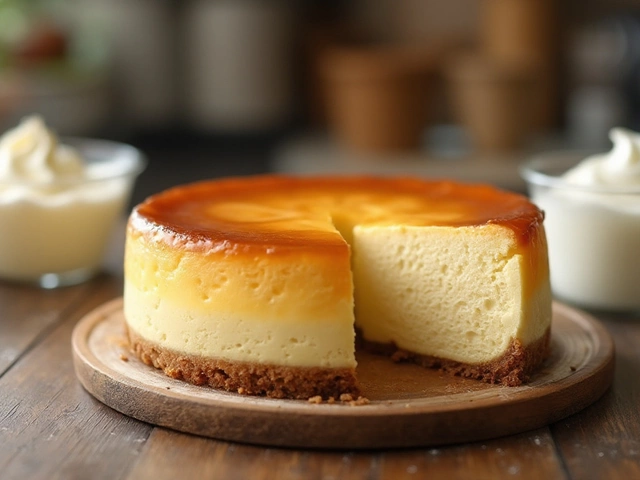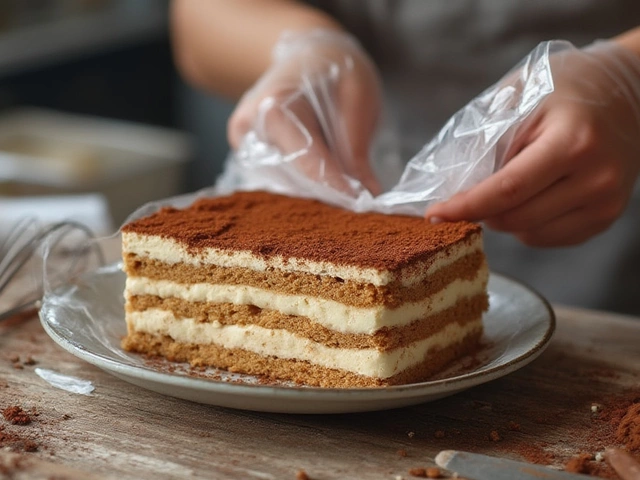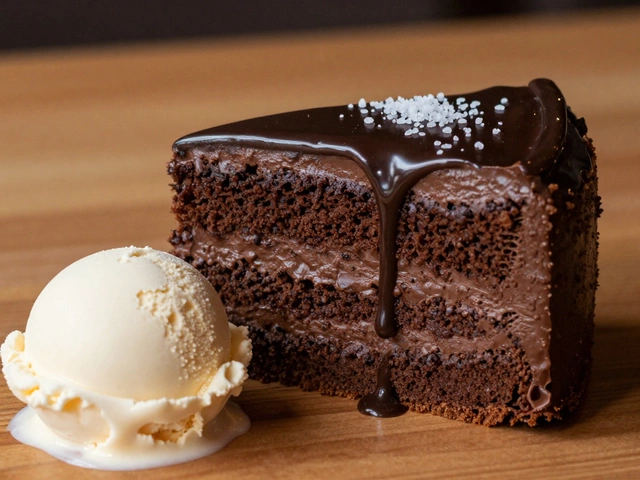
There's something undeniably comforting about biting into a perfectly moist and chewy brownie. Whether you're an occasional baker or a brownie enthusiast, achieving that ideal texture often requires a touch of know-how and a sprinkle of creativity. For those who have faced the disheartening experience of biting into a dry or crumbly brownie, fear not!
This guide is here to unravel the mystery of consistently baking heavenly, soft brownies. Every detail matters, from selecting the right ingredients to knowing how to store them for later enjoyment. Ready to dive into the delicious science behind the perfect brownie? Grab your apron, your favorite mixing bowl, and let's bake brownies that will be tender, moist, and simply irresistible.
- Choosing the Right Ingredients
- Proper Mixing Techniques
- Baking Time and Temperature
- Storage Tips for Maximum Freshness
- Common Mistakes to Avoid
- Creative Ideas for Brownie Variations
Choosing the Right Ingredients
In the quest for the ultimate moist and chewy brownie, the journey often begins with selecting the perfect ingredients. Each component in your brownie recipe has a crucial role and contributes to that luscious texture and deep flavor. The foundation of every brownie is its chocolate; it not only imparts richness but also determines whether your brownies will turn out more cake-like or fudgy. When it comes to chocolate choices, real chocolate will provide a depth of flavor that can't be matched by cocoa powder alone. Opt for a semi-sweet or dark chocolate, with a cocoa content of at least 60%, to achieve a balanced bittersweet taste. Some bakers swear by the inclusion of both chocolate and cocoa powder, as this combination helps boost the chocolate flavor while keeping the brownies dense and intensely chocolaty.
Next, consider your source of fat, which significantly influences texture. Butter is the traditional choice, offering a creamy taste that margarine cannot replicate. When using butter, make sure it is fresh and of high quality, as old butter can impart undesired flavors. Some adventurous bakers experiment with oil alongside or instead of butter; vegetable or olive oil can create moist brownies with a slightly different mouthfeel. Oil is typically used in recipes where a moist texture is desired, but be cautious with olive oil, as its fragrance can sometimes overwhelm the delicate balance of flavors unless it's specifically suited to the recipe.
Sugar is more than just a sweetener in brownie recipes; it affects texture and moisture as well. Using a combination of granulated sugar and brown sugar can enhance moisture retention, with brown sugar imparting a slight hint of caramel that complements the chocolate notes beautifully. Eggs are another critical component, serving as binders that contribute to the brownie’s chewy texture. Using room temperature eggs is key, as they emulsify better, leading to a smoother batter. A little vanilla extract, while common in most recipes, is non-negotiable for elevating the chocolate flavor to new heights.
Flour is where we often see a divide in preference between cakey and fudgy brownies. All-purpose flour is the go-to for most recipes, but reducing it slightly in your mixture can result in a denser, chewier product. Some even substitute a small percentage of the flour with cornstarch to soften the gluten formation process. Salt might seem an odd addition to a sweet dish, but it acts as a flavor enhancer, cutting through the sweetness to bring out the more subtle chocolate notes. As you plan your brownie masterpiece, remember that quality counts, and each component relatedly contributes to the harmony of flavors and textures.
"Even the most perfect brownie is a sum of deliberate ingredient choices," advises Molly Gale, renowned pastry chef known for her mouth-watering chocolate creations.
Being thoughtful about these choices can make all the difference in transforming an ordinary batch into something quite spectacular. Here’s a handy overview of the core ingredients, their roles and effects on brownie texture:
| Ingredient | Role | Impact on Texture |
|---|---|---|
| Chocolate | Flavor base | Fudginess and richness |
| Butter/Oil | Fat source | Moisture and texture |
| Sugar | Sweetness and texture | Texture consistency |
| Eggs | Binder | Cohesion and chewiness |
| Flour | Structure | Cakeyness vs. chewiness |
| Salt | Flavor enhancer | Flavor balance |
Proper Mixing Techniques
Mixing might seem straightforward enough—just combine the ingredients, right? Yet, when it comes to baking those perfect brownies, getting the mixing technique down can be the difference between a tough, dense outcome and one that's delightfully moist and chewy. Start by ensuring all your ingredients are at room temperature. Cold eggs or butter can throw off your mix, leading to uneven baking. It's important as it enables each component to blend smoothly, creating a harmonious texture.
When you combine your wet ingredients—think eggs, melted butter, and vanilla extract—you are starting the foundation of moistness. A gentle hand is key when incorporating dry elements like flour, cocoa powder, and sugar. Overmixing can activate the gluten in flour too much, resulting in a less than tender brownie. Mix just until combined. You might find it helpful to use a method called 'folding' for gentler incorporation. Lift from the bottom of the bowl with a spatula and fold over to the top, ensuring you reach every pocket of unincorporated flour.
In an interview with "Bon Appétit", chef Claire Saffitz once said,
"The magic really happens when you take care mixing the batter—a few extra folds and you're your side of heaven."Her words resonate because, during this mixing phase, air pockets are formed that help provide that luscious chewiness we all adore in chewy brownies.
Precision in measurement matters a lot in mixing. Use a good quality scale for weighing ingredients where possible, rather than measuring cups, especially for flour. This ensures consistency in every batch of moist brownies and prevents drying out issues. Now, there's more to handle at this stage than you might think. Adding too much baking powder or baking soda increases the risk of your brownies rising unevenly, leading to a crumbly texture. Stick to the recipe and measure meticulously.
Interestingly, a statistical survey from the International Baking Association suggests that bakers who weigh dry ingredients produce 15% more perfectly textured bakes compared to those who use volume measurements. It's about precision and ensuring you do justice to those precious ingredients. Apart from all the specifics, remember: Have fun with the process, because baking is as much art as it is science. Relax and enjoy crafting these delectable treats, mindful of each step, and bask in the delicious reward of a job well done.

Baking Time and Temperature
In the quest for the perfect moist brownies, understanding the intricacies of baking time and temperature can be a game-changer. The transformation of batter into chewy brownie bliss depends heavily on these factors. Did you know that each oven is a bit unique? Ovens can vary up to 10 degrees from the temperature on the dial, making an oven thermometer a baker's secret weapon. Having this tool ensures that you’re baking at the desired temperature, preventing any unexpected surprises.
When aiming for that ideal chewy brownie texture, it's essential to bake at a slightly lower temperature for a longer time. Typically, brownies bake well at around 325°F to 350°F. This gentle heat allows the brownie center to remain soft while the edges firm up, creating that perfect contrast in textures. Start checking your brownies a few minutes early, as oven efficiency and brownie pan size can affect cooking times. Most recipes recommend baking for approximately 20 to 30 minutes. However, your secret to success lies in removing them from the oven when they still have a slightly undercooked look in the middle. Carryover cooking will complete the process as they cool, ensuring a moist bite.
Too many home bakers have faced the disappointment of over-baking their brownies, resulting in a dry and crumbly dessert. Monitoring closely near the end of the expected baking time can help avoid this common mishap. Some bakers prefer using a toothpick test around the edges while leaving the center undisturbed, aiming for a few moist crumbs sticking to the toothpick. This unspoken rule helps achieve the goal without losing any delicious moisture.
"Perfect brownies are all about timing and patience. Waiting and watching, rather than quickening the pace, is key to texture." - Culinary Institute of America
The size and material of your baking pan can also influence baking time. Dark or nonstick pans may require adjustments, benefiting from a slightly lower oven temperature to avoid over-browning. Meanwhile, glass or ceramic dishes may require you to increase the bake time slightly to reach the desired consistency.
Finally, remember that practice makes perfect. Every batch brings insight, allowing you to tailor the process to your personal preferences over time. Understanding how these factors interplay will empower you to create brownies that are just as you imagine: gooey centers with slightly crispy edges, every bite irresistible and indulgent.
Storage Tips for Maximum Freshness
Preserving the irresistible chewiness of your homemade brownies requires more than just baking them to perfection; how you store them is a crucial step in maintaining that ideal texture. Begin by allowing your moist brownies to cool down completely. This might sound trivial, but hasty storage can cause condensation in the container, leading to sogginess. Once cooled, ensure that you cut them into portions of your choosing, which will make retrieval easy and prevent excessive air exposure each time you reach for a treat.
Your choice of storage container matters significantly. Opt for an airtight container that will keep your chewy brownies delightfully fresh. Glass or plastic options work well, provided they seal securely. If you're storing them at room temperature, place a sheet of parchment paper between layers if you stack them. This avoids sticking and keeps each brownie intact and delicious. Remember, they can typically be stored for up to a week at room temperature when stored properly.
If you plan to enjoy your brownies later, the freezer is your best ally. Wrap each piece individually in plastic wrap or aluminum foil for an extra layer of protection against freezer burn. Then, toss them into a resealable freezer bag or an airtight container before placing them into the freezer. When the craving strikes, simply thaw them at room temperature. Most importantly, freezing doesn’t compromise their moistness, often tasting as fresh as the day they were baked. "
Baking is an art, but storage is the science of maintaining that art," says renowned pastry chef and author Dominique Ansel.
Now, let’s not forget about reviving brownies that might have lost a bit of their initial luster. To bring back their moisture and softness, heat them briefly in a microwave. A short 15-second zap for a piece can work wonders. Alternatively, if you prefer a slightly crispy texture with a moist inside, reheat them in an oven pre-warmed to 300°F for about 5 minutes. Whichever method you choose, let them rest a moment before taking that indulgent bite.
Lastly, consider adding a slice of bread to your storage container. It’s a sometimes surprising yet effective method for keeping baked goods soft. The moisture from the bread helps keep the air in the container humid, preventing the brownies from drying out while the bread absorbs any extraneous moisture that could create sogginess. Just remember to replace the bread slice every couple of days for continuous freshness.
This keen focus on storage might feel detailed, but each step ensures you preserve the rich texture of your chewy brownies. No matter the occasion, knowing how to store them gives you the freedom to enjoy your delectable creations whenever you wish, without dashing their delightful quality.

Common Mistakes to Avoid
Baking brownies to perfection is an art, and like any form of art, it requires avoiding common pitfalls. A frequently encountered mistake involves overmixing the batter. When you stir the mixture too vigorously or for too long, you activate the gluten in the flour more than necessary. This results in a texture that's more akin to cake than the desired soft, chewy consistency. Aim to mix until the ingredients are just combined. The batter should appear slightly lumpy, with visible streaks of flour disappearing with a gentle fold rather than a whirl.
Another pitfall is neglecting the importance of accurate measurements. Using too much flour can turn otherwise perfectly crafted brownies into dry, disappointing snacks. Always level off measuring cups for dry ingredients with a knife. On the flip side, skimping on ingredients like butter or sugar can lead to brownies that lack moisture and flavor depth. The balance of these components affects the moisture and chewiness. Baking is all about precision, so if a recipe calls for a cup and a half of sugar, it's not an estimate—it's an essential part of the chemistry.
"Baking is both an art and a science. Precision in measurements and techniques is what transforms simple ingredients into delicious masterpieces," says renowned pastry chef Dominique Ansel.
Temperature and timing mistakes are equally troublesome. Baking brownies at the wrong temperature or for too long can dramatically affect their texture. A common misstep is not preheating the oven. When the heat isn't constant from the start, it impacts how evenly the brownies cook. You want them to be just set on top, with a slightly wobbly center upon removal from the oven. They continue to cook as they cool, a fact often overlooked by early testers. Decreasing the baking time by even just a few minutes can make a world of difference.
Caring for Your Brownies After Baking
Post-baking mishaps are often a result of cutting brownies too soon or storing them improperly. It’s tempting to slice into them straight out of the oven, but patience is key. Let them cool completely before slicing to avoid crumbling. Once cooled, consider wrapping moist brownies tightly in plastic wrap or storing them in an airtight container. This preserves their texture, preventing them from drying out. Brownies notoriously absorb odors from their environment, so keep them away from strong-smelling foods in the fridge.
| Mistake | Consequences | Solution |
|---|---|---|
| Overmixing | Cakey texture | Mix until just combined |
| Improper measurements | Dry or flavorless | Measure accurately using the right tools |
| Incorrect baking time/temperature | Overcooked or uneven texture | Preheat oven, monitor bake time |
| Poor storage | Dry brownies | Store in airtight containers |
Awareness and application of these details can transform your home-baked brownies into unforgettable treats. Avoid these missteps, and each batch will be moist, chewy, and packed with flavor—the stars of any kitchen gathering.
Creative Ideas for Brownie Variations
The world of brownies is wonderfully versatile, offering bakers a playground for creativity and personalization. Exploring different variations can elevate a classic treat to an extraordinary experience. Let's begin with flavor enhancements. Incorporating ingredients such as espresso powder can intensify the chocolate flavor, creating a deeper, richer taste profile that's sure to tantalize the taste buds. Adding a pinch of sea salt on top before baking can complement the sweetness, creating a nuanced experience that will have people reaching for seconds.
For those who are texture enthusiasts, consider mixing in an array of ingredients that alter the mouthfeel. Chopped nuts, such as walnuts or pecans, can add a satisfying crunch to each bite. If nut allergies are a concern, consider alternatives like dried fruits or shredded coconut for a unique texture. Swirling peanut butter or cream cheese into the brownie batter can introduce a delightful creaminess, offering a balanced contrast to the density of the brownie itself.
Exploring global flavors can also lead to unique brownie variations. Imagine infusing the batter with spices that echo foreign cuisines, such as cardamom and orange zest for an exotic twist reminiscent of Middle Eastern treats. Matcha powder can lend a subtle green tea flavor, marrying with white chocolate chips for a fusion inspired by Asian confections. The possibilities extend to incorporating liqueurs—rum, or amaretto can impart a sophisticated note that's suitable for adult gatherings.
Another way to shake things up is by playing with form and presentation. Instead of the traditional square or rectangle, consider baking your brownies in muffin tins for individual servings. This not only affects the baking time, allowing for more controlled cooking but is also perfect for parties. Alternatively, create a layered dessert by adding a cheesecake topping or transforming a simple brownie into a trifle—layering whipped cream and berries between brownie chunks offers a visually stunning dessert that's sure to impress guests.
"Brownies are like a form of art, endlessly adaptable and unreservedly forgiving,” says culinary expert Marcus Samuelsson.
Finally, don't be afraid to experiment with the unexpected. Adding savory elements, like crispy bacon bits or a sprinkle of flaky sea salt caramel, can create a surprising yet delightful experience. This approach is all about balancing flavors—contrasting sweetness with savoriness for a balanced bite. Remember, each tweak to the traditional brownie recipe is an opportunity to discover a new favorite combination. Keep experimenting in your kitchen, and the best chewy brownies are just a recipe tweak away.
| Experiment | Ingredient | Impact |
|---|---|---|
| Texture | Chopped Nuts | Crunchy Texture |
| Flavor | Espresso Powder | Intensified Chocolate Flavor |
| Presentation | Muffin Tins | Individual Serving Sizes |





